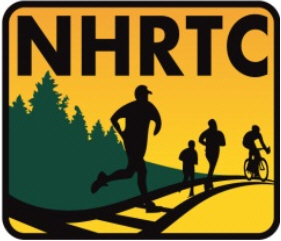
Black Heritage Trail of New Hampshire, HIstoric Marker in Hancock, NH in honor of the Due Family
Rail trails are a unique form of outdoor recreational infrastructure that has become increasingly popular in recent years. As in other places, these trails in New Hampshire are typically created by converting old railway lines into multi-use paths for biking, walking, and running. They offer a safe and accessible space for people to enjoy outdoor activities while also preserving local history and providing a unique view of the natural surroundings. While rail trails may seem like just another outdoor amenity, they hold particular importance for people of color.
For centuries, access to outdoor spaces and recreational activities has been a privilege reserved for the wealthy and white. Parks and natural areas have been segregated, and communities of color have historically been excluded from the planning and development of public spaces. New Hampshire’s rail trails provide an opportunity to disrupt this pattern and create a more inclusive and equitable outdoor experience.
One of the key benefits of rail trails is that they are often located in or near urban areas where the majority of people of color live in New Hampshire, making them easily accessible to people who may not have access to other forms of outdoor recreation. By repurposing abandoned railway lines, rail trails can connect different neighborhoods and provide safe routes for commuting, reducing the reliance on cars and increasing physical activity levels for all residents, regardless of race or socioeconomic status. I, personally, enjoy riding the trail from Goffstown to Manchester.
Several of New Hampshire’s rail trails pass through or near historically significant sites, including communities of color being found by the NH Black Heritage Trail. By creating and maintaining these trails, local governments and organizations can promote historical and cultural education and preserve the memories and legacies of those who have been historically marginalized. This can foster a greater sense of community and belonging among people of color, who have often been excluded from mainstream narratives and celebrations of history.
Finally, rail trails can also serve as a platform for community engagement and activism. By organizing events and activities along the trail, community leaders can bring people together and raise awareness about issues affecting their neighborhoods. This can include everything from clean-up efforts and park maintenance to voter registration drives and protests.
In summary, rail trails are an important tool for promoting equity and inclusion in outdoor recreation. They provide safe, accessible spaces for people of all races and backgrounds to enjoy the benefits of physical activity and connect with their community and history. By continuing to invest in and expand rail trail infrastructure, we can create a more equitable and just outdoor experience for everyone that promotes the overall health of our society.
